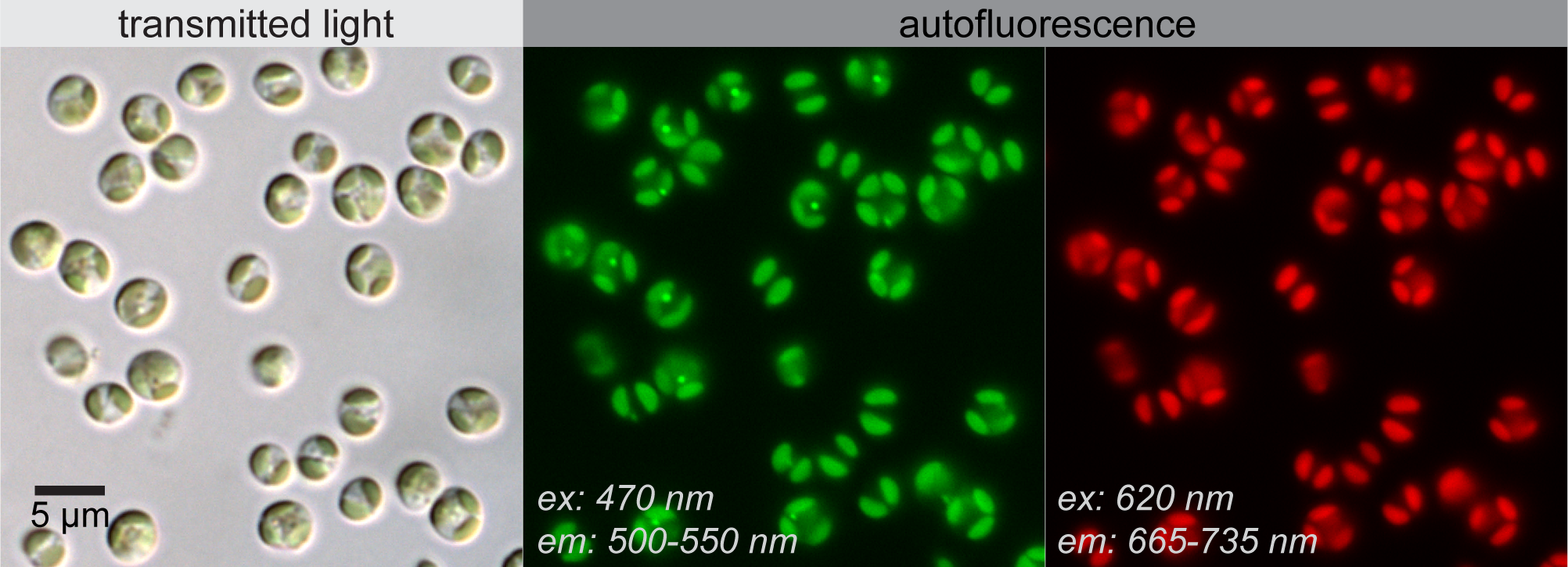
Synchronously dividing wild-type N. oceanica cells were imaged
using transmitted differential interference contrast (DIC) (left),
then imaged by widefield fluorescence microscopy using the
indicated filter sets (right). Autofluorescence originates from the
chloroplast (green and red channels) and from the carotenoid-rich
"red body" (green channel only). Photo credit: Christopher Gee
Nannochloropsis oceanica is an emerging model organism for photosynthetic Stramenopiles (heterokonts) and one of several species of the eustigmatophyte genus Nannochloropsis. These unicellular microalgae are widely considered to be promising potential feedstocks for the production of biofuels, nutraceuticals, and other bioproducts due to their high productivity and oil content. N. oceanica has a relatively small genome of ~30 Mb and a rapidly developing molecular toolkit, including transformation, targeted gene replacement by homologous recombination, CRISPR/Cas9-based genome editing, and parts for synthetic biology.
